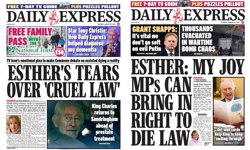It also issues guidance on the prominence of critical adjudications issued by the PCC.
The guidance covers a number of practical points that editors should take into account when considering the prominence of online corrections and apologies. Some of the points covered by the note include giving consideration to linking back to the original article, the length of time that the correction or apology should remain online, tagging, and the amendment of URLs if necessary. The guidance also gives some more specific guidance about the publication of upheld adjudications issued by the PCC.
The guidance has been published following work undertaken by the PCC's Online Working Group, a sub-committee of the Commission set up in 2010 to look at policy issues arising from online publication.
PCC Director Stephen Abell (pictured) commented: "As with offline publication, the test for the Commission will be whether the requirement by the Editors' Code for "due prominence" is met. The online environment is fast-moving, and there are a wide range of differing practices regarding publication. The PCC's guidance is intended to provide a sensible framework for both editors and the PCC, within which appropriate decisions about prominence can be taken."
To read the guidance on online prominence, click here.
Clause 1 (Accuracy) of the Editors' Code of Practice was amended in January 2011, and now states "in cases involving the Commission, prominence should be agreed with the PCC in advance".
In terms of print publications, research conducted by the PCC shows that in 2009, 84% of PCC-negotiated corrections and apologies appear on the same page or further forward - or on a dedicated corrections column - as the original transgression. For more information about this, click here.










